 After a few years in which so many restaurants were operating in survival mode, the start of 2024 feels like a time of greater optimism for restaurants. Technomic expects U.S. restaurants to experience more steady business growth this year after several years of challenging surprises. That, paired with some possible quieter shifts over the coming weeks, makes now an ideal time to put plans in place to drive your success this year. Slower periods are great times to get organized, test out new ideas and train staff. Use quieter shifts to clear out inventory, declutter storage areas or launch new technology. Assess your business over the past year: Where have you fallen short on food safety? Are there bottlenecks in your guest journey that you can smooth out? Areas where you can operate more leanly? Maintenance tasks that have been overlooked or delayed? Addressing those issues now can help you avoid crises later. This practice can also help you determine where you might be leaving money on the table so you can plan (and possibly automate) inventory management and marketing efforts, strengthen your various revenue streams, and potentially target new ones. Now is a good time for experimentation: Maybe you have a new menu, limited-time offer or service model to try on guests – a soft launch can help you collect feedback with less pressure. Focus more time on education, whether that’s training staff on new technology or providing a talented employee with some kind of career-development opportunity. Refresh your brand and your culture. Does your dining room décor or website interface feel stale and need an overhaul? Are there steps you could take to boost engagement and morale on your team? Take time to communicate, collect feedback, implement changes and monitor progress. Getting your business off to a strong start can help you better sustain the inevitable challenges that crop up later in the year. 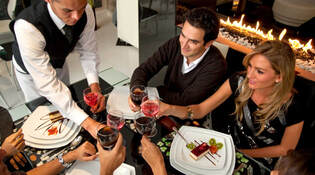 The coming holiday period is an opportunity to engage guests, encourage some extra spending, and hopefully give people an incentive to return and keep your business humming during quieter periods this winter. But you need to plan for it. According to a survey of restaurant operators by ResDiary, only 18 percent of early planners were never fully booked over the holiday period, compared to 34 percent of all restaurants surveyed; 82 percent of early planners made significantly more money over the holiday period; and only 10 percent of early planners did not say they struggled with no-show guests, compared with 26 percent of all restaurants surveyed. Hopefully you’ve already got a solid plan to generate holiday sales but there is still time to fine-tune your practices to protect your margins this season. Ensure you’ve optimized your menu with high-profit items (and have developed some subliminal cues to lead guests to your best ones). Scrutinize your food waste and make adjustments to your food ordering and preparation so you can minimize it. Consider how people are getting in touch with you to make bookings, order food or buy retail items – how can you use web-based and automated systems to ensure you’re not missing inquiries, orders and sales? Be the gift that keeps on giving into 2024 by offering gift cards and other incentives to return in the New Year. Finally, prepare your team from a scheduling and training perspective – make scheduling clear, arrange backup support where possible, offer incentives for staff working on key holiday shifts, and provide any special training they need to deliver your best service during the holiday season.  The reach of social media can make it easy to reach people far from where your business is operating – and to be sure, it has helped some brands expand to new audiences as a result. But that opportunity for scale can be a distraction if there is more you can be doing to connect with the people who live in your neighborhood. A recent Forbes report notes that more restaurants are refocusing their marketing on their local communities, while also reaping benefits from technology that can capture business from the area. There is good reason for it because local marketing efforts have a lot of potential power right now: Research has found that nearly half of all Google searches include local intent and 97 percent of users search online to find a local business. When they do, nearly 25 percent of all clicks and mobile taps end up going to the first result listed in a local business search. To take best advantage of potential sales in your community, make sure you’re appearing high up in local online searches. Your Google My Business listings, use of local keywords, and positive guest reviews can all help boost your local SEO. Think of your local community and culture when you are planning your menu, sourcing special ingredients to feature, and considering who can appear at your events and help you get the word out about them. Mine your data to better understand cultural preferences and seasonal demands as you craft promotions. On social media, use geo-targeted ads and engage with the networks to interact with guests and encourage positive reviews. When global events occur that you want to support in some way, act locally by supporting or promoting a related local cause. 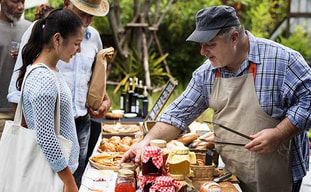 As the pandemic demonstrated, businesses gain strength from each other when they collaborate. Looking at your business, where are there opportunities for you to broaden your reach in the local community? As the warmer months approach and people are gathering over food at festivals, charity events and other occasions, think about how you can gain traction for your business through local partnerships. In addition to helping you strengthen word-of-mouth and online marketing of your business, your local partnerships can help staff morale and give them an opportunity to learn new skills and share ideas. Consider local wineries or breweries. Or businesses outside of the hospitality sector whose values complement those of your business or who offer experiences that can be enjoyed alongside the experience of enjoying your food. If you have a lot of local parents in your loyalty program, consider donating food or gift certificates to end-of-year school fundraising events. It isn’t always about stepping outside of your restaurant either. Consider offering apprenticeships to local high schools or colleges, partnering with your local chamber of commerce or with large employers in your neighborhood to offer meeting or event space, or setting up an ongoing food donation to support local people in need. You’re not just generating opportunities for your business – you’re also building a larger support system.  The power of contests Want to supercharge your following on social media? Or expand the trove of guest data you have at your fingertips? Try hosting a contest or giveaway. According to a study from Tailwind, this one move can help you boost your following 70 percent faster in three months than if you hadn’t hosted a contest at all. A recent report from Entrepreneur suggests restaurant operators follow these rules for launching successful contests: Make it easy to run. Make it easy for guests to take part in it. Consider it not as an end goal but part of a larger strategy to support your marketing efforts (engagement or lead generation, for example). Finally, communicate the contest end point and result with guests upon the contest’s completion. Let what is happening in your restaurant guide your contests. Looking to change your lineup of wines by the glass? Challenge your guests to suggest their favorite wine to be added to the menu. Looking to test the popularity of a new shareable appetizer board? Invite guests to like your Instagram or Facebook page for a chance to win a free one to share with friends — then ask for their feedback about it. Toast suggests a contest idea that can help a small restaurant rapidly expand its social media engagement: If you have a signature item on your menu, challenge people to vote for the one they want to eat that weekend. (Toast mentioned a small breakfast restaurant that challenged guests to take part in a Waffle Off, for which guests submitted their favorite waffle variety and the person who suggested the option that received the most “likes” won a free waffle that weekend. Even if just a few people vote, their sharing of the contest on Facebook generates exponential attention for the promotion.) 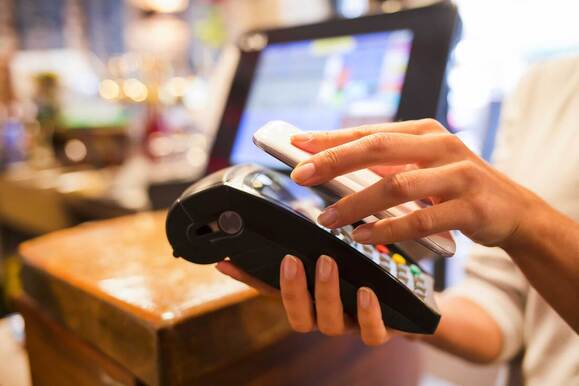 As restaurants look for new ways to boost guest loyalty and ensure steady traffic in 2022, subscription offers have become more commonplace. Brands including Panera, Pret A Manager and Taco Bell have all extended subscription offers to guests – and now Sweetgreen is testing a $10 subscription offer that allows guests to get $3 off their orders within 30 days of their subscription purchase. Forbes reports that the offer is the latest phase of Sweetgreen’s initial loyalty program, launched over five years ago, which rewarded customers with $9 in credit for every $99 they spent in restaurants or on the app -- a program more akin to the punch-card loyalty programs of the past. Subscription offers are worth considering because they may keep a brand more front-of-mind for guests at a time when restaurants need the assurance of steady traffic. Each month, the guest is reminded that there is value in returning to you. At the same time, each of their return visits can yield helpful data that allows your business to craft future offers to that guest – data you would not have if you simply issue a blanket discount after the guest reaches a purchasing threshold not connected to details about their past purchasing behavior. What items on your menu tend to bring customers back? Does your coffee attract people on their morning commute? Does your soup-and-sandwich combo generate reliable lunchtime traffic? Or perhaps there are profitable parts of your menu that you’d like guests to support more steadily. These could all be areas worth testing with a subscription offer. 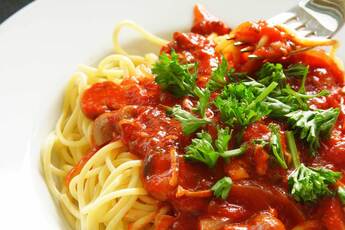 One silver lining of the pandemic for the restaurant industry has been how restaurant operators have shown the ability to creatively reinvent themselves – and well beyond the menu. In addition to creating curbside pickup lanes, working from ad hoc kitchen setups and streamlining the ordering process to improve how food is provided to customers, restaurants have expanded their offerings available for purchase. While operators may not need to go as far as selling toilet paper and other household staples as we emerge from the pandemic, it makes sense for them to think broadly about what they can do to generate new revenue streams – whether from guests visiting in person, those at home or even those who live nowhere near the brick-and-mortar business. Is your restaurant known for a special marinade, salad dressing or sauce? Could it develop one that could be sold on your website, in local stores or in larger wholesale forums? Is there other merchandise you could offer to guests who have made your restaurant part of their summer vacation traditions over the years? Could you offer a subscription for meals, desserts or homemade bread in exchange for unlimited coffee or a free glass of wine when the subscriber purchases a meal from you in person? Could you collaborate with a complementary restaurant or unrelated business to create a series of special offers? Tap into your data about customer preferences to better understand what drives your guests to your business. How can you take your most enticing offerings and ensure you’re generating as much business as you can from them? 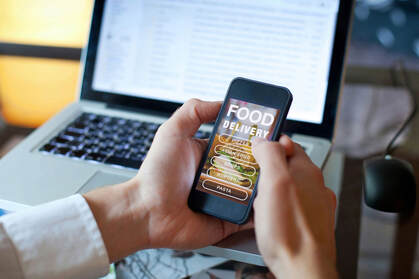 Restaurant delivery continues to climb: In 2023, the online food delivery market is expected to balloon to $154 billion from $111 billion in 2020, according to Statista. Are you doing all you can to make sure that as many delivery orders as possible are coming to you from customers directly instead of through third-party delivery apps? Your patrons aren’t necessarily seeking out the DoorDashes and GrubHubs of the world – they are simply ordering via the channel that’s most convenient to them. You can make direct orders more convenient (or at least more enticing) for them when they’re ready to place an order. First, make sure your customers know they can find the best food selection and deals if they order directly from you. Limit the menu options you offer via third-party providers to your highest-margin items – and make it clear on your website, search engine listings and social media posts that people can find a wider variety of food options, lower prices and access to limited-time offers by coming directly to you. When they do visit your website, they shouldn’t have to navigate far to where they place an order. Modern Restaurant Management suggests using a pop-up banner with a link (and perhaps a QR code) that directs them to your online ordering page. On that page, encourage them to join your loyalty program so you can continue to reach them with direct and increasingly targeted offers. Finally, make sure your customers know that they can best support you and your staff in challenging times – and help ensure they can keep their favorite dishes coming – if they order from you directly. Include language on your menu, website and on notes placed in third-party delivery bags that says just that.  Consumers are expecting things to be a bit different as a result of the pandemic – and at a time when supplies continue to be short, labor is difficult to find and customer traffic is unreliable, restaurants can use this expectation to their advantage. Many restaurants already are: Take Michelin-rated Eleven Madison Park, which announced it would be reopening as an entirely plant-based restaurant after its closure during the pandemic. As you have managed your restaurant throughout the course of the pandemic, have you come to conclusions about major aspects of your business that need to change in order to preserve the longevity of your restaurant? Would you be better able to stabilize your menu by making it entirely plant-based? Have you always relied on a dine-in customer base but believe this can no longer be your main source (or even a small source) of sales? Do you think you should serve a different demographic of customers than you did before? Are you too reliant on labor shifts – and burdened by the need to provide higher wages and benefits? Now is a good time for reinvention. Identify your primary pain points when it comes to your supplies, staffing, marketing and day-to-day operations management. By changing things that may have needed changing for a long time, you can give yourself a new story to tell customers, refresh your brand and generate renewed interest in it as we emerge from the pandemic. 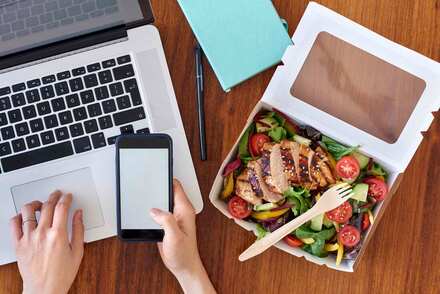 As the pandemic continues, hybrid work arrangements look like they may be here to stay for many – if not most – companies around the country. Global research indicates that 72 percent of corporate leaders plan to offer hybrid models of working. How might your restaurant meet the moment? If your dine-in business lunch traffic continues to be low, could your business find a new way to attract the guests who used to come to you? Panera, for one, has been acting on a new strategy aimed specifically at remote workers. They are offering scheduled group ordering, as well as catering for companies with workers in different places. At a time when companies are trying to navigate how to maintain camaraderie across employee teams that may only see each other for a few days each week in satellite offices, offering a regularly scheduled catered lunch might be an appealing way to make the most of the time employees spend face to face. Or, you could target the large population of consumers working from home. The World Economic Forum said recently that up to 20 percent of the U.S. entire workforce will continue to work from home permanently, up from 5 percent pre-pandemic. If you’re located in an area with condominium complexes where people are apt to be continuing to work from home, offering a scheduled building-wide delivery might enable you to attract lunchtime traffic – even if it’s not in your dining room |
Subscribe to our newsletterArchives
April 2024
Categories
All
|

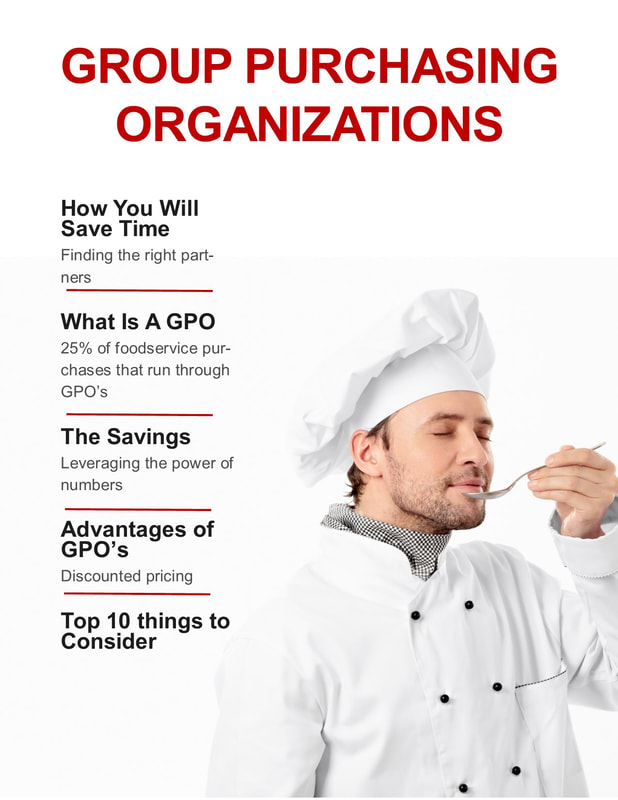

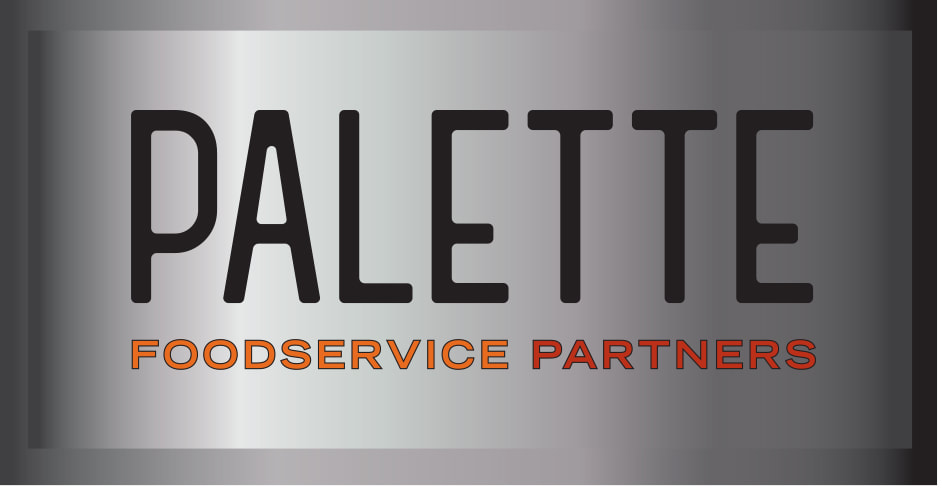
 RSS Feed
RSS Feed